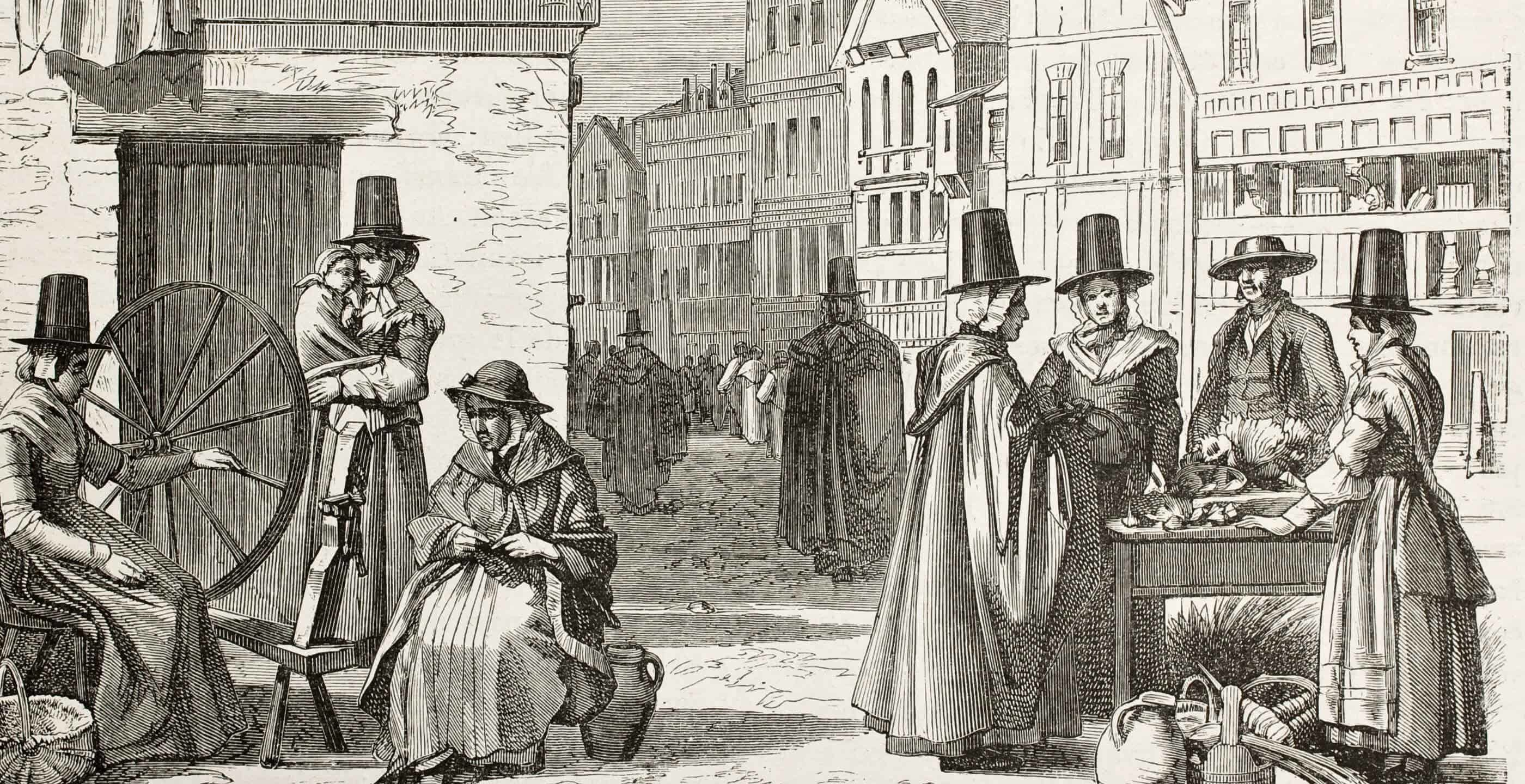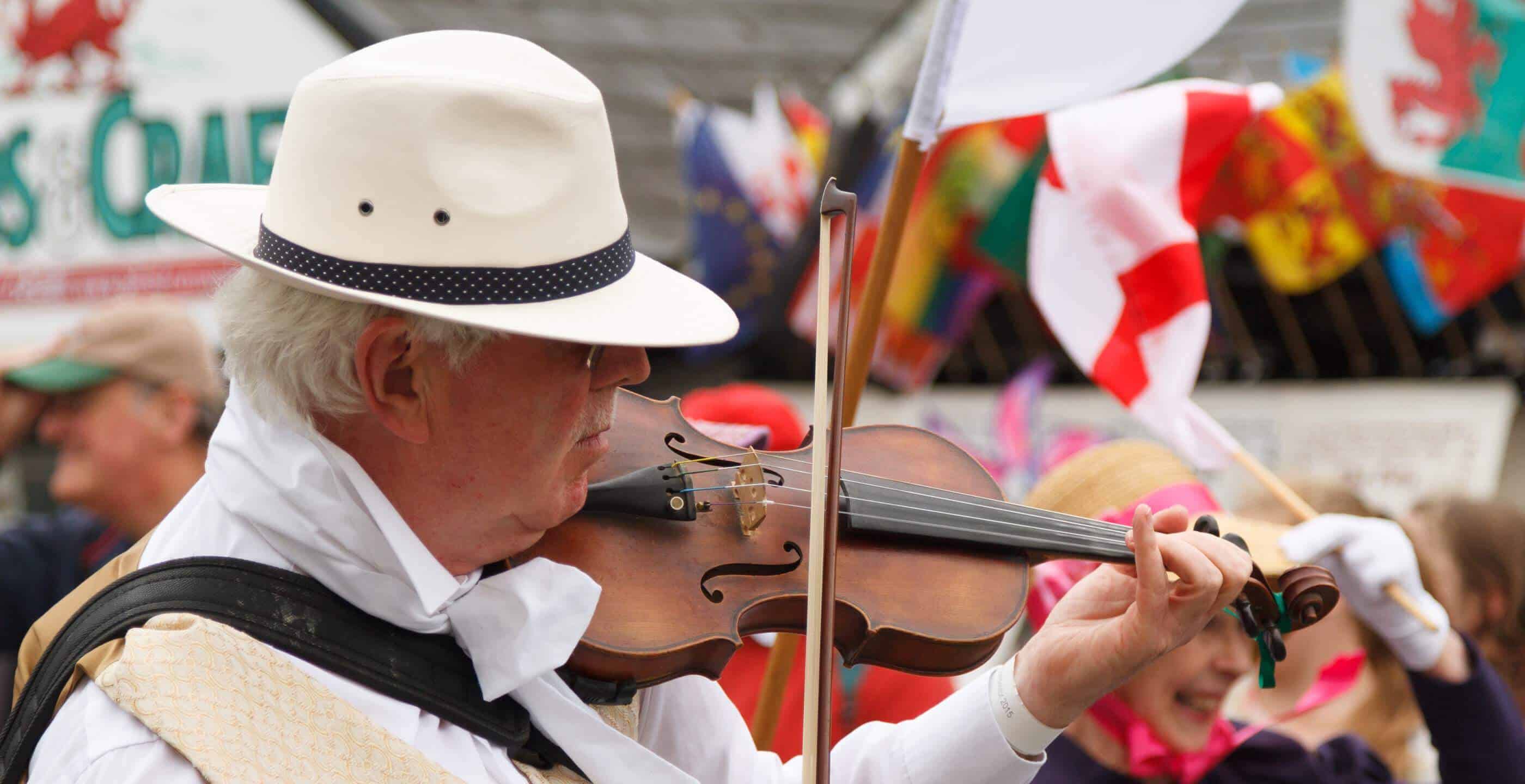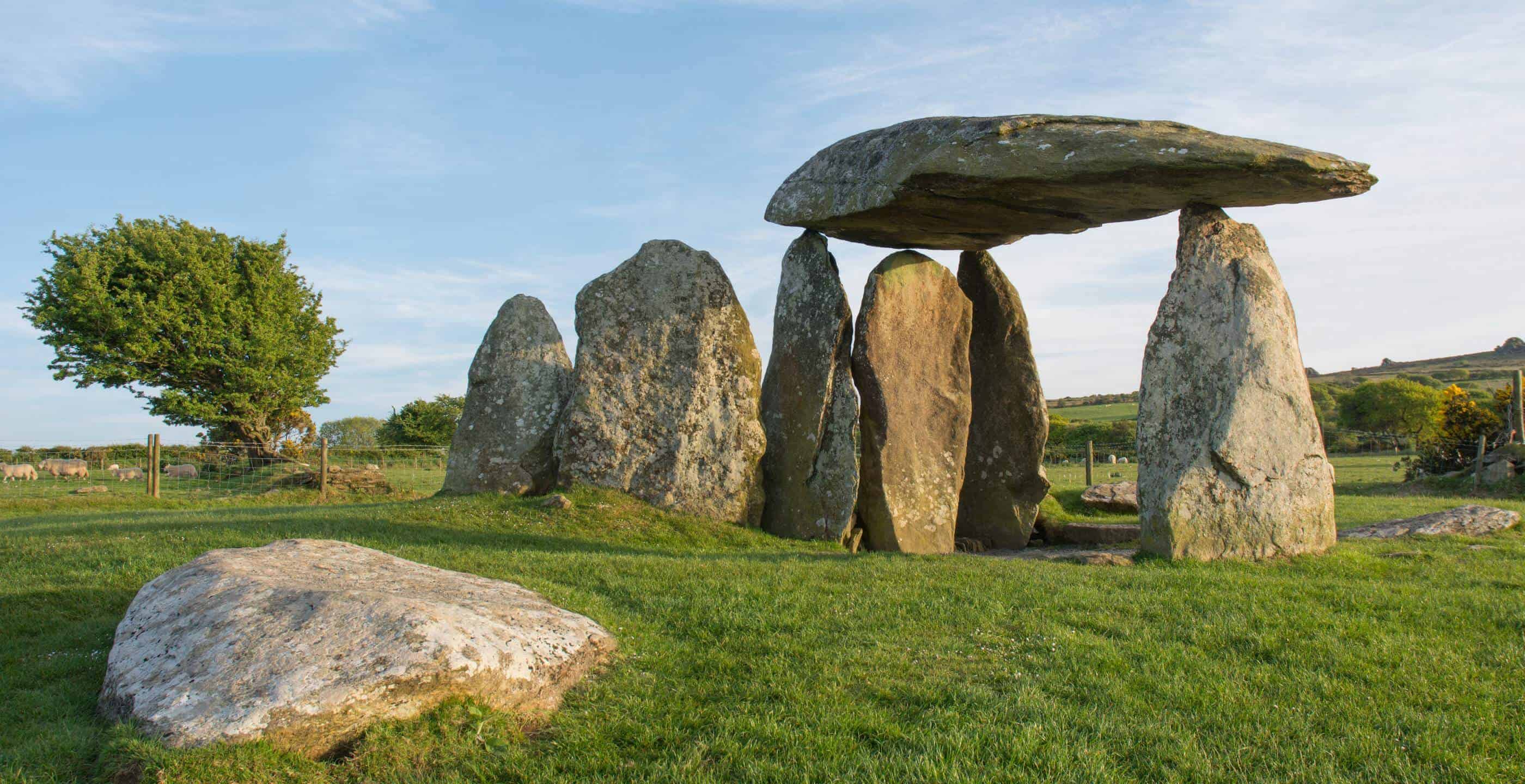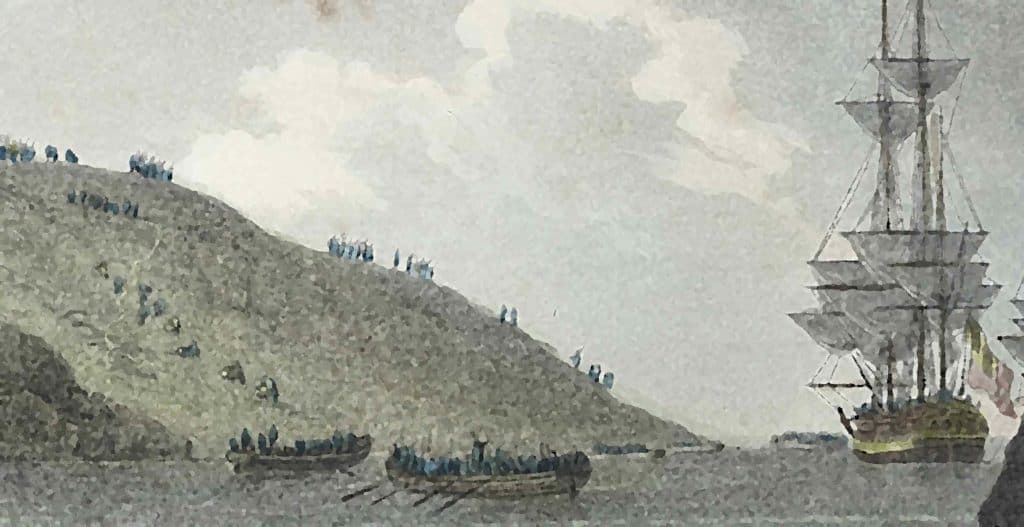Not many countries can say that their national dress may have saved a nation!
The last invasion of Britain took place at Fishguard in Wales in 1797, when French troops successfully landed near Llanwnda. After a looting spree during which much wine was consumed (a Portuguese ship had been shipwrecked just a few days earlier and her cargo ‘saved’ by the locals), many of the invaders were too drunk to fight. Within two days, the invasion collapsed and the French surrendered to a local militia force.
Strangely though, the surrender agreement refers to several thousand British redcoat soldiers coming at the French – but there were only a few hundred soldiers in Fishguard! There were however, in this rural area, hundreds of Welsh women dressed in their traditional red cloaks and black hats who had come to see what was happening. At a distance, it appears that the drunken French may have mistaken these women for British Grenadiers!
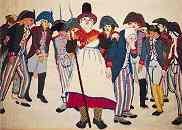
Traditional Welsh dress was worn by women in rural areas of Wales. The distinctive dress was based on a form of bedgown made from wool, of a style dating from the 18th century, worn over a corset. This was teamed with a printed neckerchief, a petticoat, apron and knitted stockings. The dress was completed by a high crowned hat reminiscent of 17th century fashions and a red, caped cloak.
Prior to the late 18th / early 19th century there was no such thing as a Welsh national costume. During the 1830s, Lady Llanover, the wife of an ironmaster in Gwent, was very influential in encouraging the wearing of a ‘national’ dress. She considered it important to establish a Welsh national identity as at this time many felt their national identity was under threat. She encouraged the use of the Welsh language and the wearing of an identifiable Welsh costume, based on the rural women’s traditional dress.
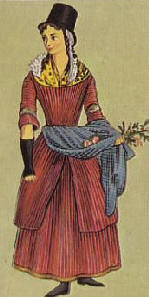 The adoption of the costume also coincided with the growth of Welsh Nationalism, as the rise of industrialisation was seen as a threat to the traditional agricultural way of life.And as most of the costume was made from wool, this also boosted the Welsh woollen industry.
The adoption of the costume also coincided with the growth of Welsh Nationalism, as the rise of industrialisation was seen as a threat to the traditional agricultural way of life.And as most of the costume was made from wool, this also boosted the Welsh woollen industry.
As the 19th century progressed, the wearing of traditional dress became less popular and by the 1880s the Welsh costume was worn more as an attempt to maintain tradition and celebrate a separate Welsh identity, than as an everyday costume.
Today Welsh costume is worn on St David’s Day and by performers at concerts and eisteddfodau. It is also very important for the tourism industry: dolls in Welsh dress make excellent gifts and souvenirs!
